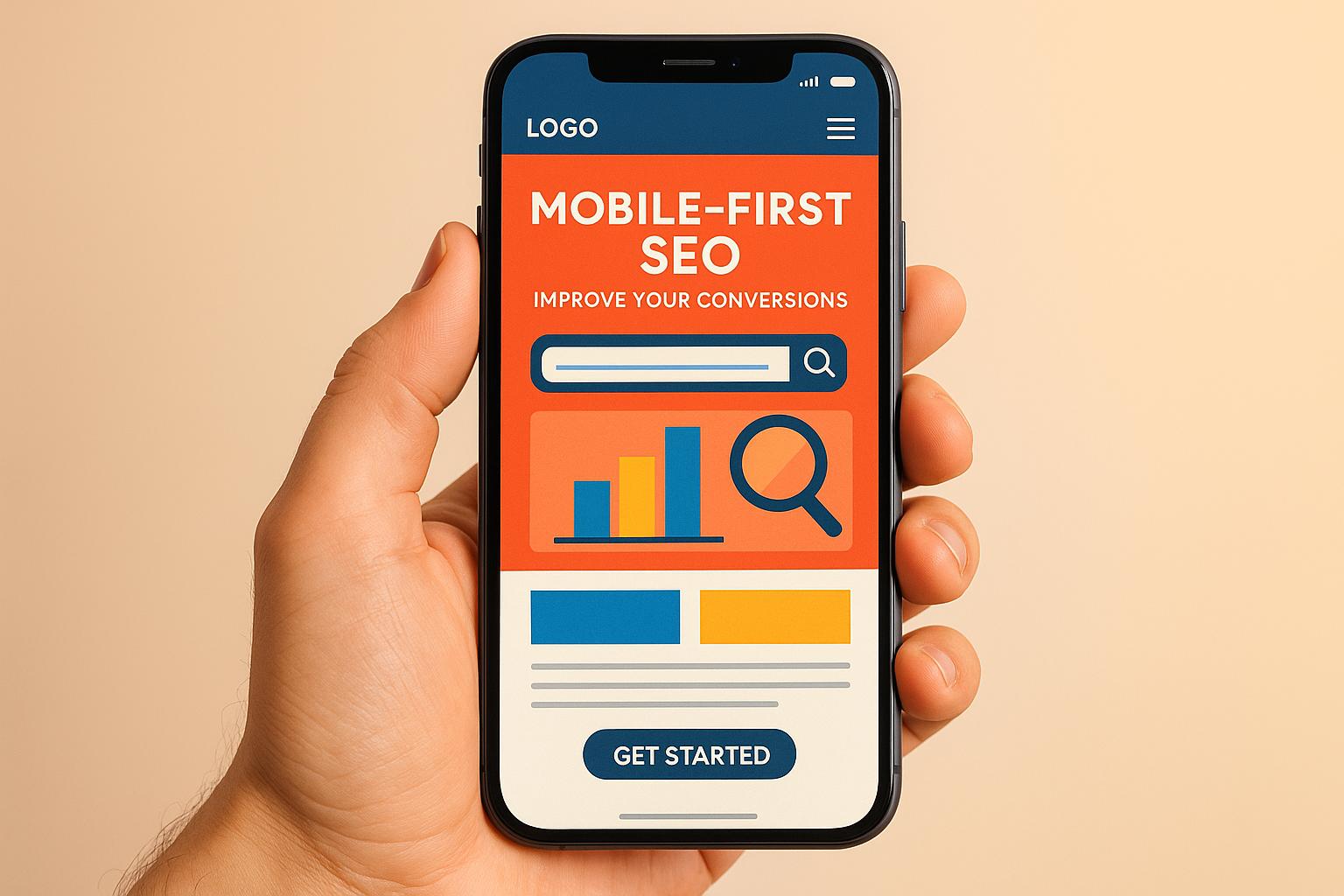

A Strategic Approach to SEO for One Page Websites

A Strategic Approach to SEO for One Page Websites
 18-03-2025 (Last modified: 23-06-2025)
18-03-2025 (Last modified: 23-06-2025)
One-page websites are great! They are easy to create, can be visually stunning and user-friendly, but they come with a unique SEO challenge – how do you rank well when all your content is on a single page? Unlike multi-page websites that have dedicated URLs for different topics and can interlink between internal pages, SEO for one-page websites requires a more strategic approach.
If you’re struggling to get your one-page site noticed on search engines, don’t worry. This guide will break down the best SEO techniques to optimize your one-page website, helping you boost rankings, drive traffic, and improve user experience.
Why SEO for One Page Websites is Different
A traditional website has multiple pages optimized for different keywords and organised clearly in navigation, giving Google a clearer understanding of the site’s content and structure. In contrast, a one-page website compresses all information into a single URL, making it harder to rank for multiple search queries.

The key challenges of SEO for one-page websites include:
- Limited keyword opportunities – Less content means fewer chances to rank for different keywords.
- Navigation and user experience issues – Too much scrolling can hurt engagement.
- Difficulty with link-building – Fewer pages mean fewer opportunities to earn backlinks.
- Indexing limitations – Google relies on structured data and clear signals to understand the site’s purpose.
Despite these challenges, there are effective ways to optimize your one-page website for search engines.
1. Target the Right Keywords (Without Stuffing)
Since you have limited content space, choosing the right keywords is critical. Instead of trying to rank for broad, high-competition keywords, focus on long-tail keywords that are specific to your niche.
Keyword Optimization Strategies:
- Identify one primary keyword that represents your main topic.
- Use supporting keywords and variations naturally throughout the content.
- Optimize headings (H1, H2, H3) by incorporating relevant keywords.
- Include keywords in meta tags, image alt text, and URLs.
Example: If you run a one-page portfolio site for web design, instead of targeting “web design,” go for “freelance web designer for startups”.
2. Structure Your Content with Sections & Jump Links
Google loves well-structured content, and whilst one page websites can’t structure content in the usual way, there are still ways the site can be carefully organized to help search engines understand different topics.
Best Practices:
- Use clear headings (H1 for main title, H2 for sections, H3 for subtopics).
- Create jump links (anchor links) that act like navigation within the page.
- Implement a sticky menu with jump links to different sections.
- Add a FAQ section to answer common user queries with structured content.
Jump links not only improve user experience but also help Google index different sections as separate search results.
3. Optimize Meta Tags & Page Titles
Your title tag and meta description are crucial for SEO since your one-page site doesn’t have multiple pages to target different keywords.
Title & Meta Description Optimization:
- Keep the title under 60 characters and include your main keyword.
- Write a compelling meta description (under 160 characters) with a call to action.
- Use schema markup to help Google display rich snippets in search results.
Example: Title: “Freelance Web Designer for Startups | Custom Websites & Branding” Meta Description: “Looking for a freelance web designer? Get custom-built, mobile-friendly websites that convert. Contact me today for a free consultation!”
4. Implement Schema Markup for Better Visibility
Schema markup helps search engines understand your content better and improves your chances of appearing in rich results.
Types of Schema to Use:
- Local Business Schema (for service-based businesses)
- FAQ Schema (if you have a FAQ section)
- Review Schema (for testimonials and ratings)
- Event Schema (if you offer workshops, webinars, or online courses)
You can add schema markup manually or use an SEO plugin like Rank Math to automate the process.

5. Speed Up Your Website (Because No One Likes Waiting)
Page speed is a ranking factor, and slow-loading sites increase bounce rates. Since one-page websites often have lots of images, animations, and scripts, optimizing speed is crucial.
Ways to Improve Speed:
- Compress images using tools like ShortPixel or TinyPNG.
- Enable browser caching and lazy loading.
- Use a lightweight WordPress theme (if applicable).
- Minimize CSS and JavaScript to reduce page size.
- Host your site on a fast and reliable hosting provider.
Test your site’s speed using Google PageSpeed Insights or GTmetrix.
6. Leverage Backlinks & Social Sharing
Since one-page websites don’t have multiple pages to earn backlinks, you’ll need to get creative with link-building.
Link-Building Strategies:
- Guest post on industry blogs with links back to your site.
- Submit your site to local business directories (if applicable).
- Share content on social media platforms to encourage shares.
- Encourage satisfied customers to leave Google reviews with a link to your site.
Each backlink strengthens your site’s authority, making it easier to rank higher.
7. Mobile Optimization is a Must
More than 50% of web traffic comes from mobile users. A responsive, mobile-friendly site is essential for SEO success.
Mobile SEO Best Practices:
- Use responsive design that adapts to all screen sizes.
- Ensure text is readable without zooming.
- Avoid pop-ups that cover important content.
- Optimize buttons and touch elements for easy navigation.
Google prioritizes mobile-friendly sites in its rankings, so testing your site on different devices is crucial.
8. Track Performance & Adjust Strategies
Once you’ve optimized your site, track your SEO progress and adjust based on data.
Best Tools for Monitoring SEO:
- Google Analytics – Tracks traffic sources and user behavior.
- Google Search Console – Monitors keyword rankings and indexing issues.
- PageTest – Helps test different content strategies for improved performance.
Regularly reviewing analytics ensures you stay ahead of the competition.
Final Thoughts: Mastering SEO for One Page Websites
Although one-page websites present unique SEO challenges, they can still rank well with the right strategies. By optimizing your content structure, improving speed, leveraging backlinks, and using schema markup, you can ensure your site is visible in search results.
If you’ve been wondering how to optimize SEO for one-page websites, now you have a roadmap. Start implementing these strategies today and watch your site climb the rankings!
say hello to easy Content Testing
try PageTest.AI tool for free
Start making the most of your websites traffic and optimize your content and CTAs.
Related Posts

 28-11-2025
28-11-2025
 Becky Halls
Becky Halls
AI Social Media: How to Prepare for 2026
AI social media has flipped regular social media on its head! Not slowly. Not subtly. Completely!Feeds are now prediction engines. Creators are using AI in their workflows. Platforms are ranking content based on behaviour signals and semantic meaning rather than hashtags alone. And the gap between brands who adopt AI early and brands who don’t […]
 24-11-2025
24-11-2025
 Becky Halls
Becky Halls
How Social Media Marketing Will Change in 2026: Stop Posting, Start Getting Found
Social media is no longer a place people visit after they have finished “real” research. For a huge chunk of users, especially under 35, TikTok, Instagram, YouTube and Reddit are where research starts: which product to buy, which tool to try, what restaurant to visit, how to fix a problem. In 2025, almost two thirds […]

 20-11-2025
20-11-2025
 Ian Naylor
Ian Naylor
How Mobile-First SEO Impacts Conversions
Optimizing for mobile is crucial for improving user experience and boosting conversion rates, as mobile traffic continues to rise.
